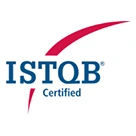Navigating the Digital Seas: The Crucial Role of Software Testing in Risk Management
By: Nilesh Jain
|
Published on: December 13, 2023
In today's fast-paced digital world, businesses are increasingly
reliant on software to drive their operations and customer
experiences.
However, with this reliance comes a myriad of risks that can
potentially disrupt operations, damage reputation, and lead to
financial losses.
Chief Technology Officers (CTOs) and technology leaders bear the
responsibility of navigating these treacherous waters and ensuring
that software is not only functional but also resilient and secure.
This blog post explores the vital role of risk management through
software testing in ensuring a smooth sailing journey for businesses
in the digital seas.
Understanding Software Development Risks
Software development is rife with risks. These risks can be
categorized into several key areas:
1. Smart Contract Testing
Testing smart contracts presents unique challenges:
-
Functionality:
The risk that the software may not perform as intended, leading to
user dissatisfaction or even loss of revenue.
-
Security:
The potential for vulnerabilities that could be exploited by
malicious actors, resulting in data breaches or cyberattacks.
-
Performance:
The risk of poor system performance under heavy loads, leading to
slow response times and user frustration.
-
Compliance:
The danger of non-compliance with industry regulations, which can
result in legal issues and financial penalties.
-
Integration:
The risk of software components not working seamlessly together,
causing operational disruptions.
The Role of Software Testing in Risk Mitigation
Software testing is the strategic linchpin in mitigating these
risks. It serves as the safeguard that identifies issues before they
reach production and impact end-users. Here's how software testing
contributes to risk management:
-
Functional Testing:
Ensures that the software functions correctly according to
specifications, reducing the risk of functionality-related
problems.
-
Security Testing:
Identifies vulnerabilities and weaknesses in the software,
allowing for timely remediation and reducing the risk of security
breaches.
-
Performance Testing:
Evaluates how the software performs under various conditions,
minimizing the risk of performance-related issues in production.
-
Regression Testing:
Helps catch unintended side effects of code changes, reducing the
risk of regressions that could affect existing functionality.
-
Compliance Testing:
Ensures that the software adheres to relevant regulations and
standards, reducing the risk of compliance violations.
Prioritizing Risks in Software Development
CTOs face the challenge of allocating limited resources effectively
to manage these diverse risks. Prioritization is key. Some risks may
be more critical to the business than others, and it's crucial to
focus testing efforts where they matter most. This involves
considering factors like the potential impact on business
operations, financial consequences, and regulatory requirements.
Risk-Based Testing: A Proactive Approach
Risk-based testing is a proactive approach that aligns testing
efforts with the most critical areas of the application. It involves
several steps:
-
Risk Assessment:
Identify and assess the risks associated with the software
development project. This includes both technical and business
risks.
-
Test Planning:
Based on the risk assessment, create a test plan that prioritizes
testing activities, focusing on high-risk areas.
-
Test Execution:
Implement the test plan, concentrating efforts on critical
functionalities and areas with the highest risks.
-
Continuous Monitoring:
Throughout the development lifecycle, continuously monitor and
reassess risks to adapt testing strategies as needed.
Measuring Testing ROI: Demonstrating Value
To justify the resources allocated to software testing, CTOs need to
demonstrate its value. Key performance indicators (KPIs) such as
defect detection rate, test coverage, and the number of
high-priority issues resolved can help quantify the return on
investment (ROI) of testing efforts. This data not only justifies
the budget but also provides insights into the effectiveness of the
testing process, enabling continuous improvement.
To know more about other important QA metrics
read here
Case Studies: Real-World Examples of Effective Risk Management
Illustrate the practical benefits of risk management through
software testing, let's delve into a couple of real-world case
studies:
Case Study 1: Banking Application
A leading bank implemented rigorous security testing for its online
banking application. By identifying and addressing vulnerabilities
before they could be exploited, the bank prevented potential data
breaches, preserving its reputation and customer trust.
Case Study 2: E-commerce Platform
An e-commerce giant implemented performance testing during peak
shopping seasons. This proactive approach ensured that their
platform could handle surges in traffic, preventing downtime and
revenue losses.
These case studies emphasize that investing in risk management
through software testing is not merely an expense but an investment
in the long-term success and resilience of businesses.
The Evolving Landscape: Emerging Risks and Technologies
The digital landscape is continually evolving, introducing new risks
and challenges. For example, the rise of artificial intelligence
(AI) and the Internet of Things (IoT) has opened up new attack
vectors and potential vulnerabilities. CTOs must stay vigilant,
adapting their risk management strategies to the evolving
technological landscape.
Conclusion: Navigating the Digital Seas with Confidence
In conclusion, risk management through software testing is not a
luxury but a necessity for modern businesses. CTOs play a critical
role in steering their organizations through the ever-changing
waters of software development. By understanding the software
development risk landscape, prioritizing risks, implementing
risk-based testing, measuring ROI, and staying vigilant in the face
of emerging risks, CTOs can ensure a smooth sailing journey for
their organizations in the digital seas. With software testing as
their compass, they can navigate confidently, knowing that they've
fortified their software against the unpredictable tides of
technology and business.





















